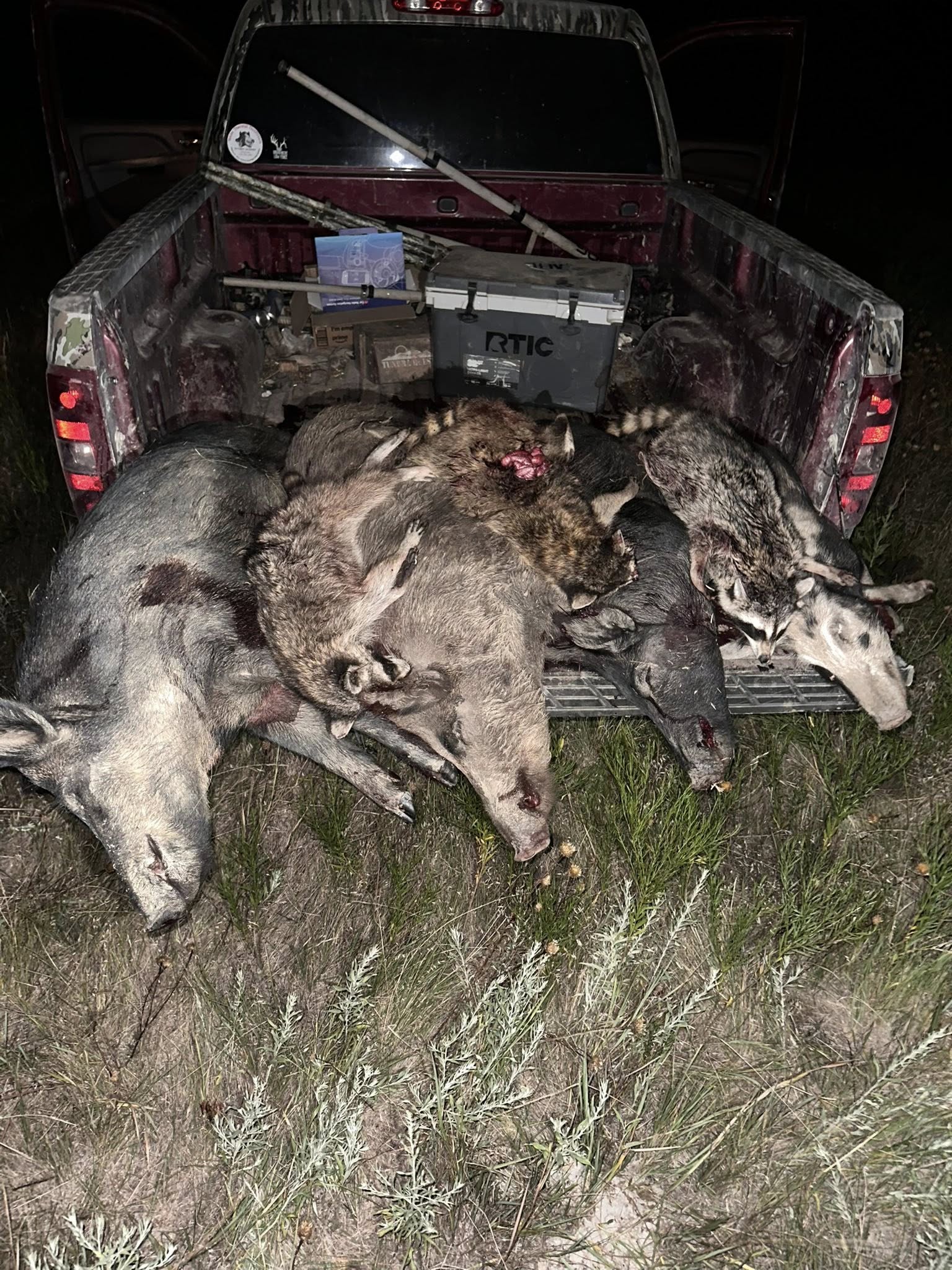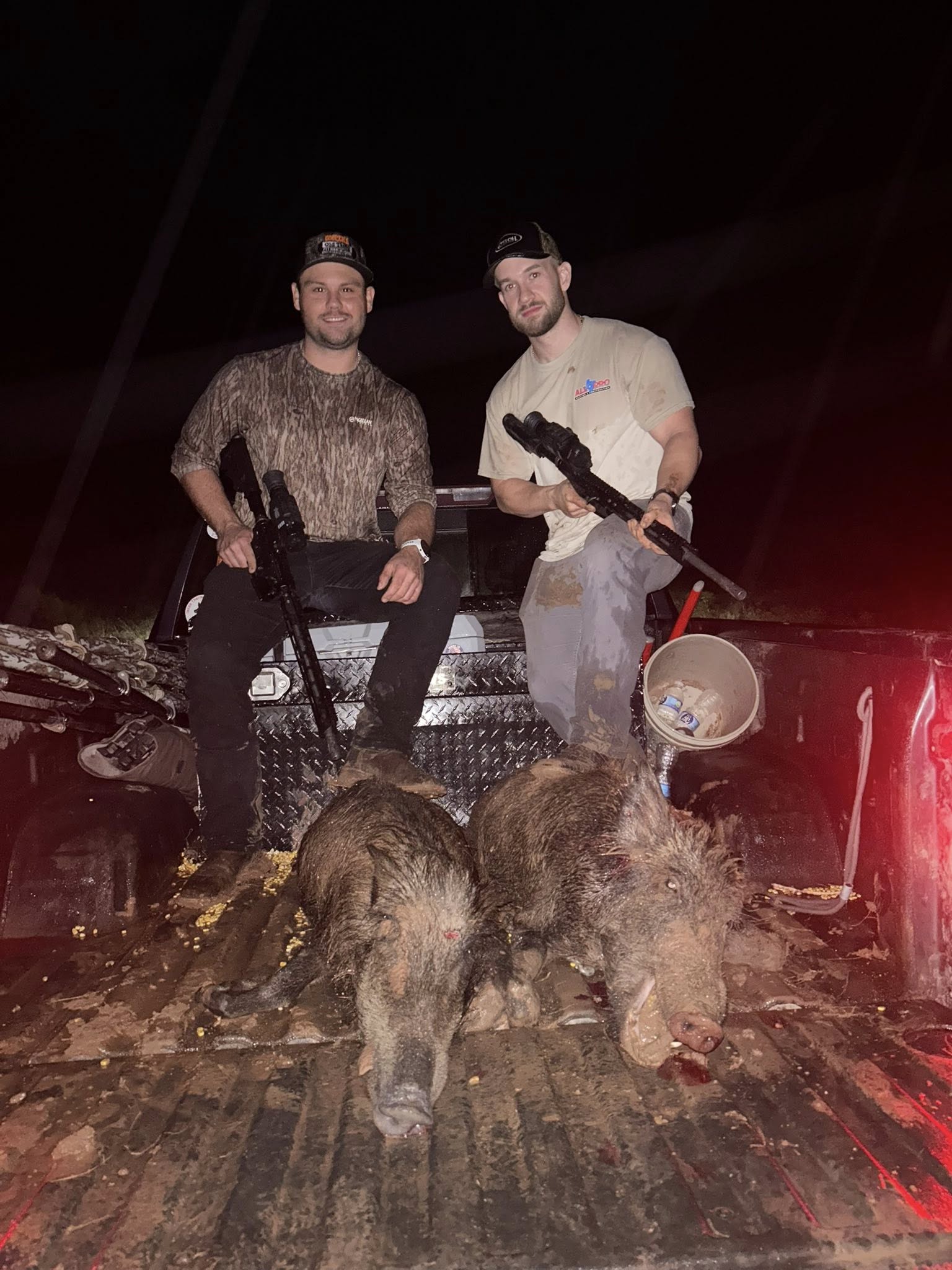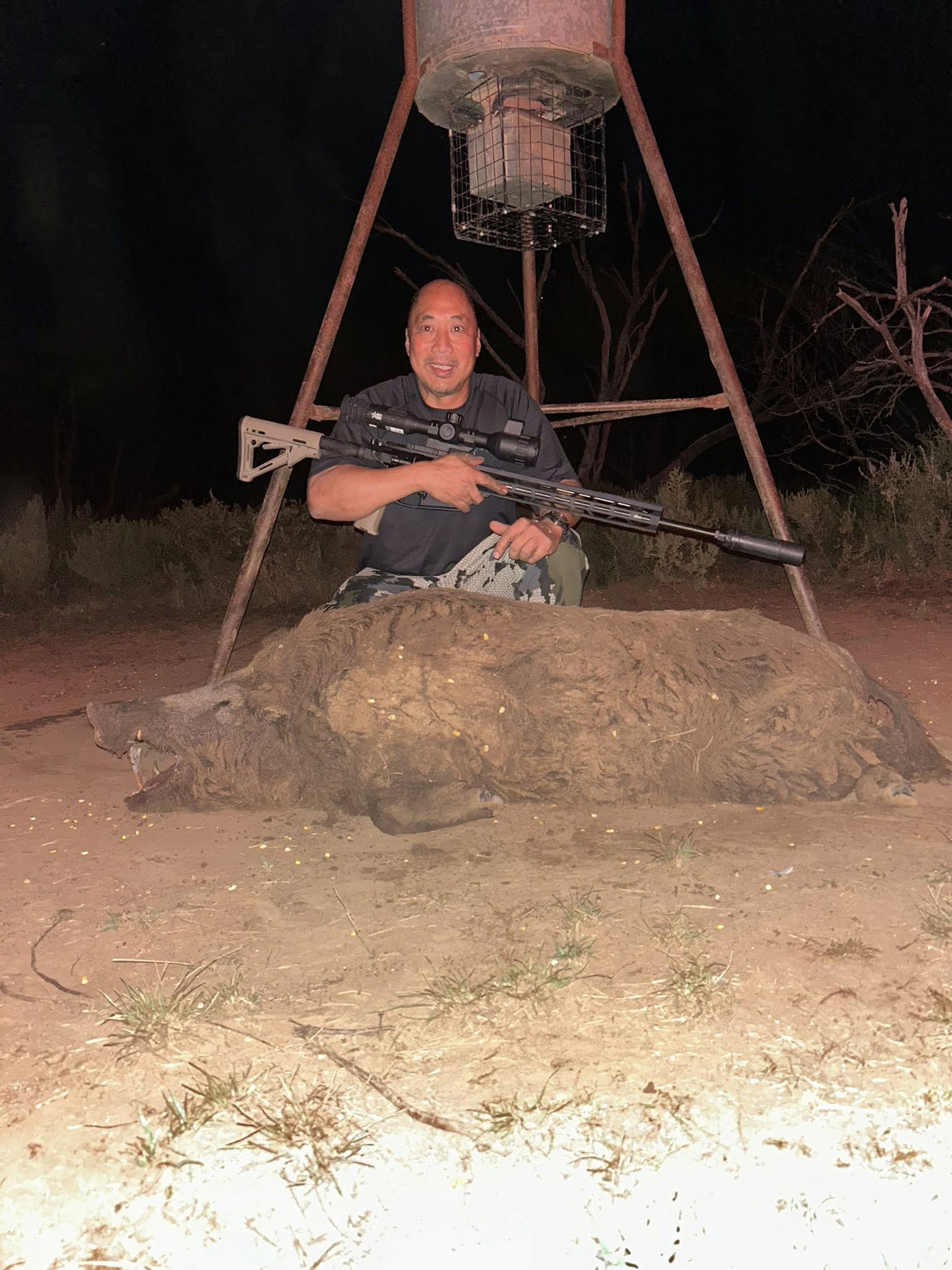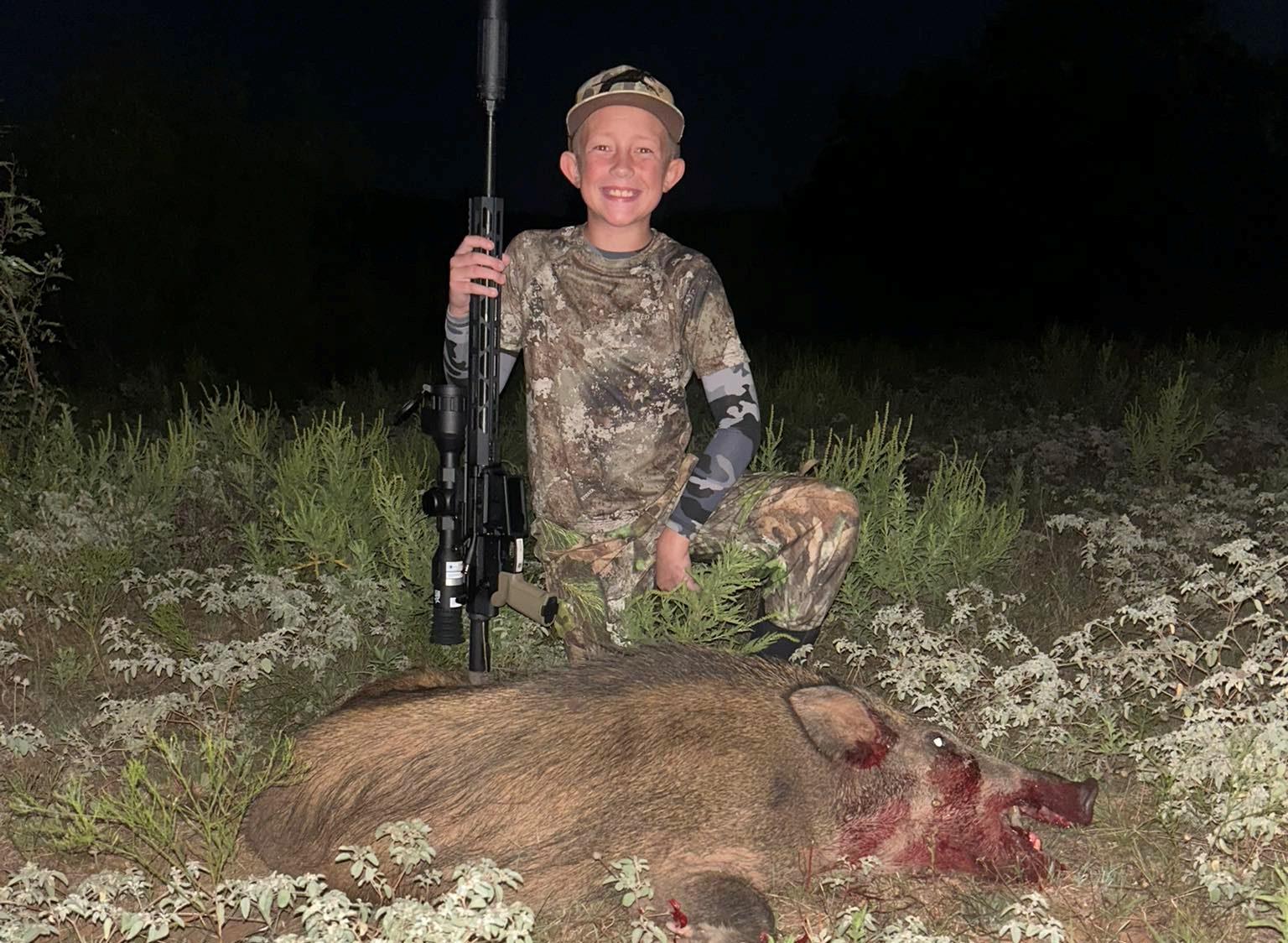
The History Of Texas Hog Hunting
The History Of Texas Hog Hunting
Hog hunting in Texas is a story that spans centuries, beginning with the earliest European explorers and continuing into the modern era of advanced technology and population management. Today, feral hogs are considered both a destructive force and one of the most sought-after game animals in the state. To understand the importance of hog hunting in Texas, it helps to look back at their origins, the impact on agriculture, and the role hunting plays in controlling this invasive species.
The Arrival of Hogs in Texas
Feral hogs are not native to North America. Spanish explorers introduced domestic pigs to the Gulf Coast region in the 1500s, releasing them as a reliable food source for settlers and travelers. Over time, these pigs adapted to the wild, breeding freely and spreading across the Texas landscape. The combination of abundant food, temperate climate, and a lack of natural predators allowed populations to grow rapidly.
Colonial and Frontier Era
In the 1700s and 1800s, hogs became a staple for Texas pioneers and ranchers. Many families allowed their pigs to roam freely, rounding them up periodically for food. While this practice provided meat, it also contributed to the development of feral populations. By the time Texas joined the United States in 1845, wild hogs were already a common sight on farms and rangelands.
Impact on Agriculture Over Time
As Texas developed into a major agricultural state, the presence of feral hogs became increasingly problematic. Their rooting, wallowing, and feeding behaviors damaged crops, destroyed fences, and degraded pastures. Today, the Texas A&M AgriLife Extension Service estimates that hogs cause more than $500 million in damage annually to crops, livestock, and property across the state.
In addition to direct damage, hogs also spread disease, contaminate water sources, and compete with livestock for food. For farmers and ranchers, hog management is no longer optional, it is a constant necessity.
Cultural Significance of Hog Hunting
Hog hunting is deeply ingrained in Texas culture. For generations, rural families relied on wild hogs as a source of food and tradition. Hunters passed down knowledge of tracking, trapping, and butchering through families and communities. Over time, hog hunting grew from a necessity into a celebrated outdoor sport, with festivals, cook-offs, and hunting competitions showcasing its importance to local culture.
Modern Hog Hunting in Texas
In the 21st century, hog hunting has become both a recreational pursuit and a form of wildlife management. Texas law reflects the need for population control—there are no closed seasons and no bag limits on feral hogs. This means hunters can pursue hogs year-round, day or night, with a wide range of legal methods. Outfitters across the state now provide opportunities for hunters of all experience levels to take part in the challenge.
Popular Methods of Hunting
- Spot-and-Stalk: Tracking hogs on foot across open country or wooded terrain.
- Stand Hunting: Using blinds or elevated stands near feeders, trails, or water sources.
- Night Hunting: Employing thermal optics or night vision for after-dark hunts when hogs are most active.
- Helicopter Hunts: Aerial hunts designed for efficiency and population control across large ranches.
- Trapping: A common method for landowners to capture multiple hogs at once using corral or box traps.
Benefits of Hog Hunting
- Population Control: Reduces agricultural damage and helps protect native habitats.
- Economic Value: Hog hunting supports local businesses, outfitters, and rural economies.
- Sport and Tradition: Provides hunters with challenging and exciting year-round opportunities.
- Food Source: Feral hog meat can be processed into sausage, barbecue, or smoked cuts.
- Wildlife Management: Limits competition with native species such as deer and turkey.
Challenges of Hog Management
Despite intensive hunting and trapping, feral hog populations continue to grow. A single sow can produce up to two litters of 4–12 piglets each year, meaning even aggressive hunting often cannot keep populations in check. Wildlife biologists stress that hunting alone is not enough—successful management requires a combination of hunting, trapping, and landowner cooperation.
Frequently Asked Questions About Texas Hogs
When did hogs first arrive in Texas?
Spanish explorers introduced pigs in the 1500s, many of which escaped or were released, forming the basis of today’s feral populations.
Why are feral hogs considered invasive?
They reproduce rapidly, destroy crops, compete with native wildlife, and lack natural predators in Texas.
How quickly do hog populations expand?
A sow can produce two litters per year with up to 12 piglets per litter, leading to exponential growth.
How many hogs live in Texas today?
Estimates from Texas Parks and Wildlife suggest more than 2.6 million feral hogs roam the state, with populations spreading into nearly every county.
What weapons are best for hog hunting?
Common choices include AR-platform rifles in .223/5.56 or .308, bolt-action rifles, and shotguns. Many hunters use thermal scopes or night vision optics.
Can hogs be hunted at night?
Yes. Texas allows night hunting with landowner permission. Thermal and infrared optics are especially effective for nighttime pursuits.
What are helicopter hog hunts?
Helicopter hunts are aerial shooting experiences, often using AR-style rifles. They are highly effective for controlling hog populations over vast ranchlands.
Are feral hogs safe to eat?
Yes, when properly handled and cooked. Many hunters enjoy wild hog meat, turning it into sausage, pulled pork, or smoked specialties.
Why do out-of-state hunters visit Texas for hog hunts?
Texas offers year-round hunting with no bag limits, making it an attractive destination for hunters seeking unique and exciting opportunities. At Texas Thermal Outfitters, we can accommodate both adult and youth hog hunters.
How do hogs affect native wildlife?
They compete for food with deer, turkey, and other animals, while their rooting destroys nesting sites for birds and amphibians.
How do hogs damage water sources?
Hogs often wallow in ponds and streams, contaminating water with bacteria and sediments, which negatively impacts both livestock and wildlife.
What role do outfitters play in hog management?
Outfitters provide access, guides, and equipment, helping hunters contribute to population control while enjoying safe and memorable hunts.
What laws apply to hog hunting in Texas?
Because hogs are classified as a nuisance species, there are no closed seasons or bag limits. Hunters must have landowner permission and follow firearm regulations.
Do hogs impact urban areas?
Yes. In recent years, feral hogs have been reported in suburban neighborhoods, golf courses, and city parks, creating new challenges for urban wildlife management.
What strategies are most effective for long-term hog control?
A combination of hunting, trapping, aerial control, and landowner cooperation is required. No single method is sufficient on its own.
Texas Hog Hunting Today
Texas hog hunting has grown into a major industry, drawing hunters from across the country. Ranches and outfitters offer a variety of hunting styles, from traditional stand hunts to high-tech night hunts and helicopter adventures. Beyond recreation, hog hunting serves an essential role in reducing the damage caused by this invasive species. For landowners, it is both a necessity and an opportunity to share Texas traditions with hunters from all over the world.
A Lasting History of Texas Hog Hunts
The history of hog hunting in Texas reflects a journey from early colonial practices to modern management strategies. What began with Spanish settlers introducing pigs for food has grown into one of the largest wildlife challenges in the United States. While the destructive nature of feral hogs cannot be ignored, the hunting opportunities they provide continue to shape Texas culture and economy. Hog hunting remains one of the most dynamic, necessary, and rewarding pursuits in the Lone Star State.
Guided Thermal Hog Hunts In Texas
Welcome to the Texas Thermal Outfitters, your ultimate resource for Texas hog hunting. If you're looking for a world-class hog hunting experience, we've got you covered! From spot and stalk hunts to blind sits, our hunts capture the excitement thermal hog hunting in the great state of Texas.


















